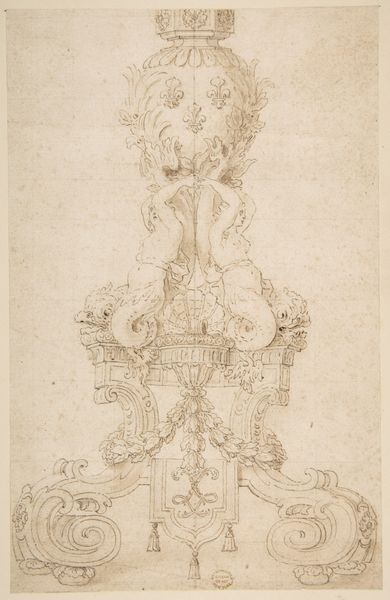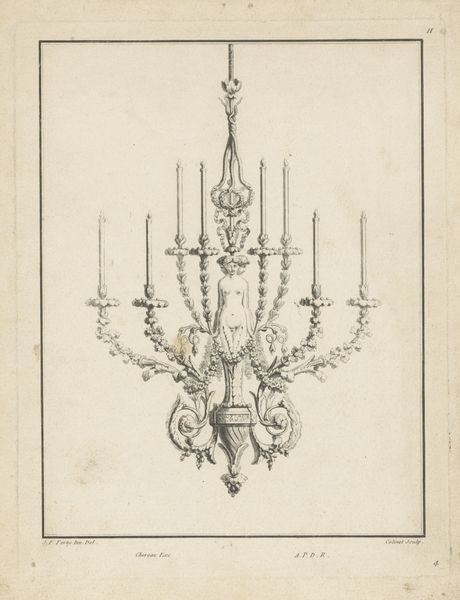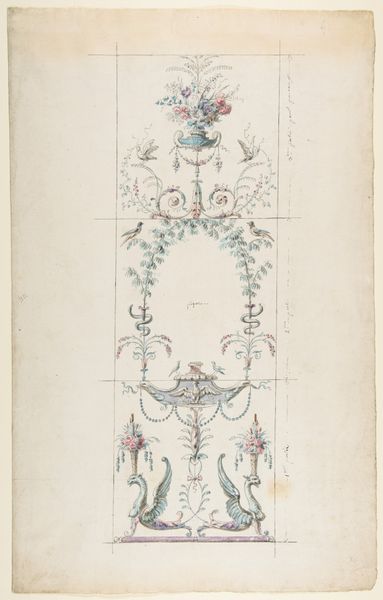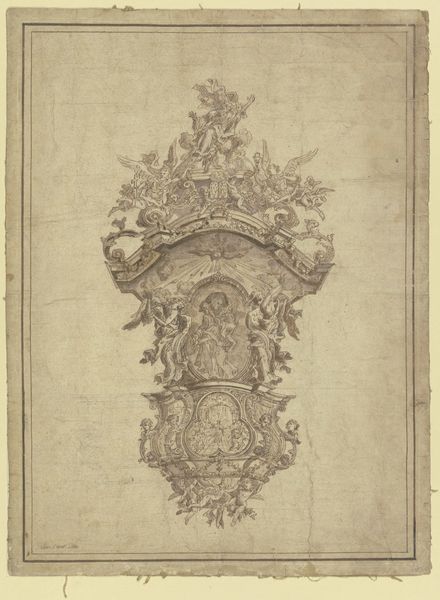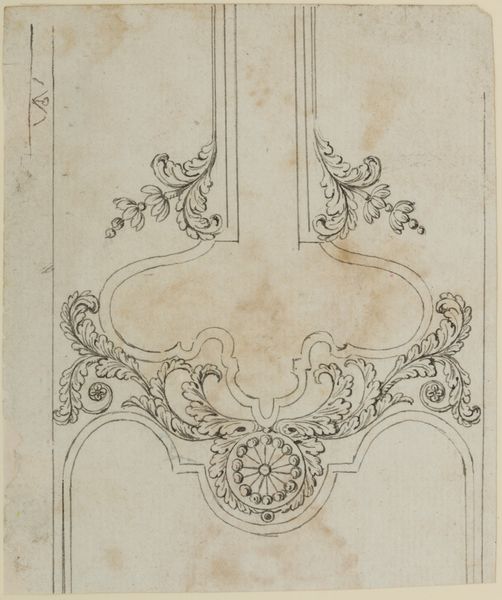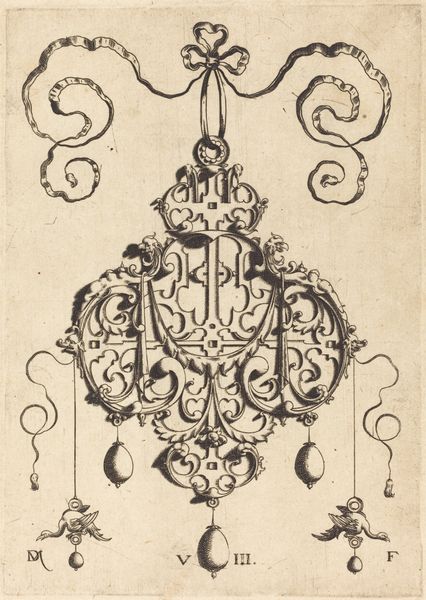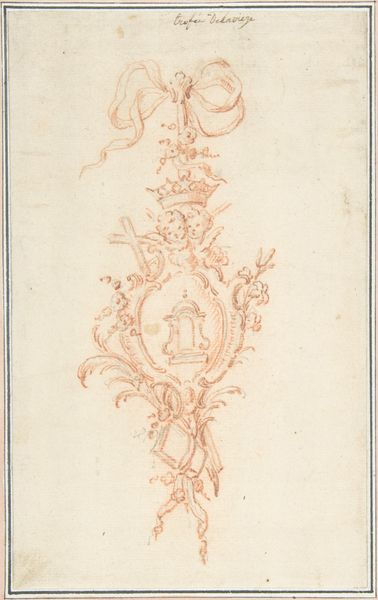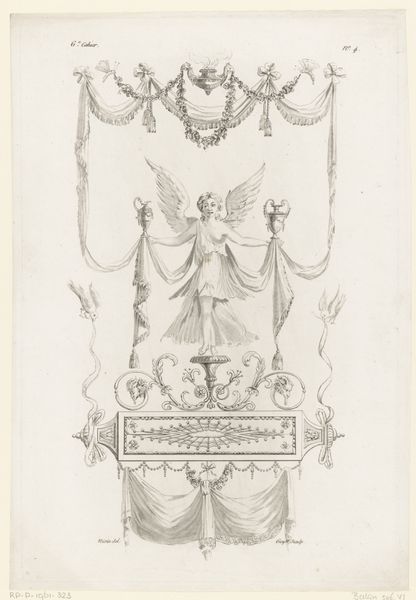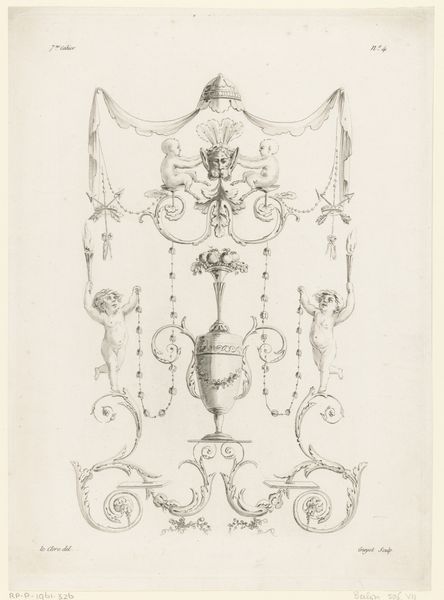
Ontwerp voor een een kroonluchter voor de Amsterdamse Schouwburg 1690
0:00
0:00
gerarddelairesse
Rijksmuseum
drawing, paper, ink
#
drawing
#
toned paper
#
water colours
#
baroque
#
paper
#
form
#
ink
#
line
#
watercolour illustration
#
watercolor
Dimensions: height 537 mm, width 375 mm
Copyright: Rijks Museum: Open Domain
Curator: Editor: So, here we have a drawing titled "Ontwerp voor een een kroonluchter voor de Amsterdamse Schouwburg" by Gerard de Lairesse, from 1690. It's rendered in ink and watercolour on paper. It strikes me as a really ornate, almost extravagant design. What's your perspective on this drawing? Curator: Well, looking at the material reality, this isn't just a drawing, is it? It's a plan, a piece of labor anticipating further labor. It speaks volumes about the Baroque era's fascination with spectacle and the literal construction of that spectacle for a public audience. Consider the materials required: the ink, the paper, the pigments. Were they locally sourced? Who produced them? The answers impact our understanding. Editor: That's a good point, I didn't consider where the materials came from. But even thinking about the finished product, who would be consuming the light, sitting under the chandelier in the Schouwburg, how would that play into its social context? Curator: Precisely! Think of the division of labor: Lairesse designs, artisans build, wealthy patrons commission, and the public enjoys – or *endures* – the performance beneath its light. And it’s crucial to consider the skills of the artisans who would have translated this drawing into a physical object. The act of "making" challenges our modern high/low art distinctions. Were these artisans considered artists themselves, or merely skilled laborers? The chandelier becomes an object of consumption, but also of production. Editor: So, understanding this design isn’t just about aesthetic appreciation, it's about unpacking a whole network of labour and materials. Curator: Absolutely. It’s about considering the conditions of its creation, the resources involved, and the social relationships it both reflected and perpetuated. Material and labour speak! Editor: I never really considered a drawing could be such a record of materials and process! Thanks.
Comments
No comments
Be the first to comment and join the conversation on the ultimate creative platform.
